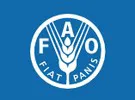Global trade in  food products has proven remarkably resilient during the pandemic, with developing countries even managing to increase export revenues, according to a new report published today by the Food and Agriculture Organization of the United Nations (FAO).
food products has proven remarkably resilient during the pandemic, with developing countries even managing to increase export revenues, according to a new report published today by the Food and Agriculture Organization of the United Nations (FAO).
Data available through June "suggest strong, albeit not complete, resilience of the global food markets to COVID-19 shocks", the semi-annual Food Outlook says in a special feature on recent trends in food imports bills and export earnings.
"The global food import bill for the whole of 2020 may even exceed that of 2019," says Josef Schmidhuber, co-author with Bing Qiao - both FAO economists - of the chapter. "There is, however, a noticeable shift away from high value food items to staples."
Developing countries have demonstrated notable "vivacity" in buoying global food trade flows, the analysis shows. Their export earnings in the first half of 2020 rose by 4.6 percent compared to the same period of the previous year, while those of developed countries declined. That is partly explained by the sharpest drops occurring for beverages, fish and meat, the demand for which is more responsive to the declines in household incomes triggered by the contracting global economy.
Over the same period, world imports of beverages fell by more than 12 percent and fish products declined by more than 10 percent, while the value of trade in animal and vegetable oils and oilseeds both increased by almost 10 percent. The report offers a rich series of graphics, data and analyses of trends by food group and region.
Tropical fruits
The COVID-19 pandemic has rattled the value chain for tropical fruits, especially the most perishable items, which require labor-intensive handling and rapid and often airborne transport and have relatively high costs.
Global trade in pineapples, mangos and papaya has declined, sometimes at a double-digit pace.
Tropical fruit producer margins are under pressure from pandemic disruptions as well as highly competitive value chains, the intensifying market power of downstream actors, the occurrence of plant diseases, and adverse weather events.
"It will be critical to develop policies aimed at providing financial support to producers so that they can remain operational, while protecting the health and safety of workers and minimizing disruptions to national and international transport routes," says Sabine Altendorf, FAO economist and author of this chapter.
Bananas and avocados, by contrast, have showed some resilience, with both fruits posting export growth, but critical strains have affected their value chains, especially for smaller producers, who face elevated prices of fertilizer and pesticides and have suffered from cancelled orders.
Demand for bananas has benefited from their perceived sanitary safety, convenience and record supplies from Ecuador, as well as an output recovery in Costa Rica.
Avocado imports have also grown on a global basis, as seasonally lower supplies from Mexico and an outright drop in purchases in the U.S. are more than offset by robust demand in the European Union and significantly higher supplies from Colombia, Kenya and Peru.
For more information: fao.org
